Nature’s own
22 April 2010 | Extracts, Non-fiction
As night falls, the silence is broken by pattering of small feet on the greying windowsill of an old, abandoned house: entire families may live under the rotten floorboards. Houses now inhabited not by humans but by wild animals are observed by Kai Fagerström and Heikki Willamo
Extracts from Viimeiset vieraat. Elämää autiotaloissa [The last visitors. Life in abandoned houses, Maahenki, 2010] by Kai Fagerström, Risto Rasa & Heikki Willamo. Text by Willamo, poems by Rasa, photographs by Fagerström and Willamo
Some thirty years later I found the badgers’ cottage again – it wasn’t the same one, but the mood of my childhood still floated there. Grey walls and a shingle roof, bare gaping windows, the door creaking on its single hinge. Oak tree in the yard, lilacs flourishing wild. The forest was rapidly reclaiming its own behind the cottage. The mounds of sand beside the wall bases showed prints of strong-clawed paws and a number of paths, hardened from use, led into the woods.
I wandered about the yard, looked at the cottage and peeked in the windows. The grey panelling was pretty and at the same time free of unnecessary ornamentation. In the front hall were shoes now decades out of style, in the main room a partially collapsed fireplace, a rusty stove and a stool missing a leg. Between the forest and the house were berry bushes and a few apple trees just barely clinging to life. In front, a hillside field facing south.
I sat in the yard under the great birch tree to await evening. I felt again the tingle of excitement of my childhood evenings in the cottage’s enchanted garden, but now the feeling was seasoned with nostalgia. It was a longing for that innocent time and at the same time for a world that was gone. The foundation stones of our lives are set at an early age and we carry those foundations through the years. Home leaves tracks within us just as do things and events experienced strongly. As adults we see the world through tinted glasses and somewhere deep within we long for the world of our childhood.
At least in that early evening moment I longed for the warm summers, butterfly-filled meadows, cows in the pasture and sand beneath my bare feet. I longed for that total immersion in the world of adventures, which only a child knows how to achieve. Here and now, and let the rest of the world disappear.
I waited. The sun set and twilight deepened. A blackbird sang. At last the pale figure of a badger appeared on the mound under the window. It perched there for a moment, then reversed back under the house. Soon it emerged onto the mound again and shuffled along the path into the woods. Nothing else happened. A lone badger was living in the cottage. Thirty years earlier I would have imagined it the surly master of the house; now it was a badger. I felt wistful. I felt I had lost something irreplaceable.
I went to the cottage on several evenings and the pattern repeated. The badger sniffed the wind and withdrew into its den, to reappear shortly. Then it disappeared on its night expeditions. The only variation was which of the two paths it chose.
During those evenings, something new began to form in the depths of my mind; curiosity replaced nostalgia. Well-built houses remain from one generation to the next. The world changes around them and in the end they are abandoned. They begin to be called abandoned houses, but they are not abandoned. Without upkeep, their fate becomes decay. When the roof finally gives, water does its part and the house collapses.
The old badger did not live to see his cottage collapse. I found him next to the road, killed by a car. He was resting on his side, his paws as if frozen mid-step. I touched one of them. The pads were coarse from walking and digging, the claws, long and sharp, the teeth shone like a string of white pearls. I carried his body into the forest and placed it beneath a small spruce.
The place was briefly without inhabitants, but in the spring a large family could be found within its shelter, a raccoon dog couple and about a dozen pups. The bustle called to mind the time when the cottage was filled with children’s voices, but the new residents were of today. The raccoon dog is an immigrant from far, the east, and it has a bad name in certain circles, as immigrants always have in certain circles. But as so often, this matter didn’t deserve much fuss, either.
In the Finnish countryside the raccoon dog is more of a beggar than a predator. Raccoon dogs busy about at dusk looking for voles, frogs, large insects and larvae. Sometimes they eat the eggs of bird’s nests they happen upon. They like berries and sneak into yards to snitch fallen fruit. They scout the roadsides, risking their lives in hope of road kill, and hang around barn corners. The raccoon dog has all the markings of a versatile bon viveur, but winter is a nearly unsurpassable barrier for it. Only one pup in ten lives to the age of one year, and of this dozen only one or two will see the following spring.
The raccoon dogs brought needed life to the cottage. White clouds of burnet roses bloomed in the doorway and even the tumble-down building seemed to hold itself more erect. It did not take a lot of imagination to see echoes of the cottage’s past in the animals’ bustling – children peeking through the crack of a door, grandma squinting benevolently through the window. The raccoon dog pup sitting in front of the deserted doghouse even recalled the family’s spitz at the start of its life.
Early in July the raccoon dogs moved away. In the autumn another badger appeared, beginning to stock the cottage for its winter quarters. The next spring he sometimes had a friend but there were no baby badgers to be seen. The old geezer continued his solitary life.
The cottage fell into decay. The roof leaked in a number of spots and finally gave. The owners carried away the best logs; the rest sank into a pile overrun with willowherb and raspberry bushes, and fox cubs growing up nearby briefly made the tangle into their fort.
![]()
A red cottage stands on a small hill. Seen from afar it appears in good shape there among the bushes, but closer up one sees the boarded windows and rotted steps. The people have gone. Along the walls are mounds of sand with hard-trodden paths leading from them. One runs directly into the apple orchard, another, along the ditch to the lakeside field, but the most well-worn leads under the leafy canopy of the hazelnut grove to a lair dug into the hillside.
I peek in through the window. Inside it looks lived in. People have left their mark: wrinkled rag rugs, things on the table and on the edge of the toppled fireplace. Toys and tops of cooking pots strewn across the floor, a torn bag in the corner. As for the current occupants, sand and dry hay, chewed items and the path under the stove tell of them.
The cottage is being used by badgers. They have another home in the woods beneath the hazel bushes….
The badger clan lives in the red cottage like in the best of fables. They have tables and chairs, rugs on the floors and a rocking chair in the corner. They probably don’t use them, but who’s to say. Anything can happen in the dark. I imagine the clan’s oldest gathering the young about him on a floor cushioned with rugs in a corner of the main room, telling them animal stories and fables. Calmly, without hurry, in badger language. He would use people in his tales – just allegorically, in place of animals.
People and badgers have different requirements for the home. While the badgers live there they redo it; they dig up the foundations and tear open the floors, hastening the building’s decay. Might the failing of this cottage’s bearing wall also be the doing of the badger clan? They have dug up the ground beneath it and caused it to fall sideways and in so doing opened a passage into the main room.
Through the badgers’ activity the house has moved into nature’s realm. After a short vacant period it again holds life, but the direction is inevitable.
The wood rots, the insulation decomposes, even the roofing felt turns brittle and crumbles. The cement cracks, the iron rusts. The glass defies time, but even that gets buried under the forest litter, shatters as frost churns the ground’s surface, and ultimately crumbles into tiny particles, like quartz sand.
Nature is reclaiming her own. After a moment on loan, the place is returning to the great cycle.
Translated by Jill G. Timbers
Tags: animals, Finnish nature, memoirs, photography
1 comment:

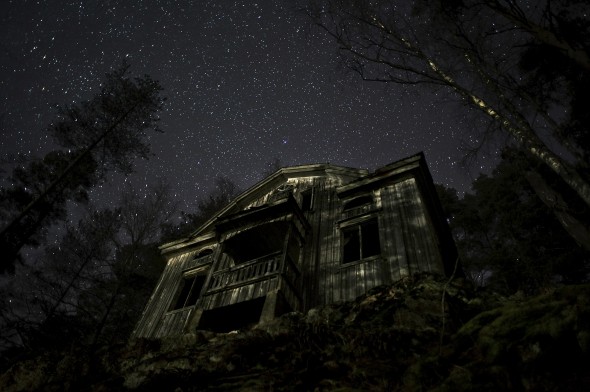
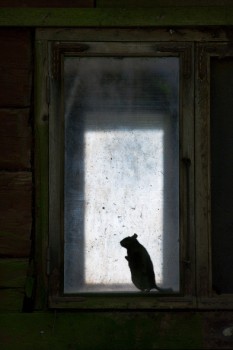
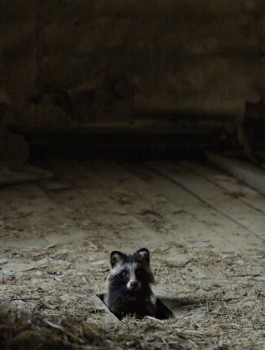
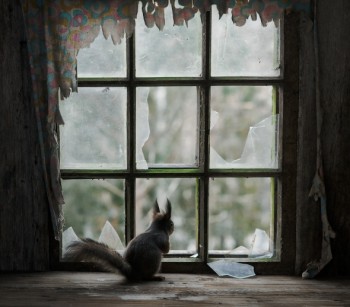
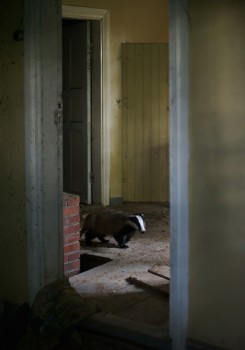
30 September 2012 on 6:52 am
How beautiful and enticing. Reading this excerpt makes me long for something – I am not sure what it is. Through the longing, I am drawn to want to know more of the life of the people who once lived in this peaceful and humble place. What made them leave? What was life like for them? Where did they go?
The longing also turns to thoughts of preservation of this old homestead. A desire to inhabit and bring it back to life while keeping the wildlife near.